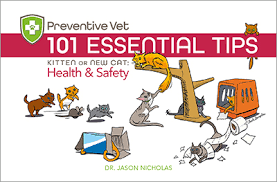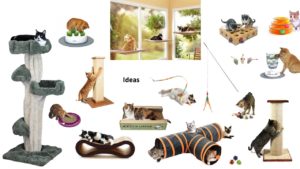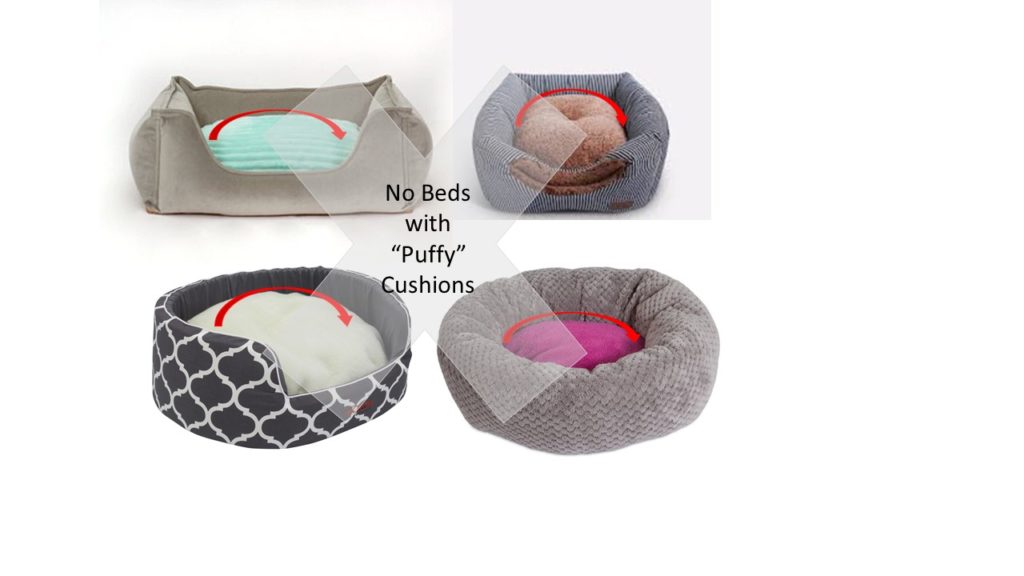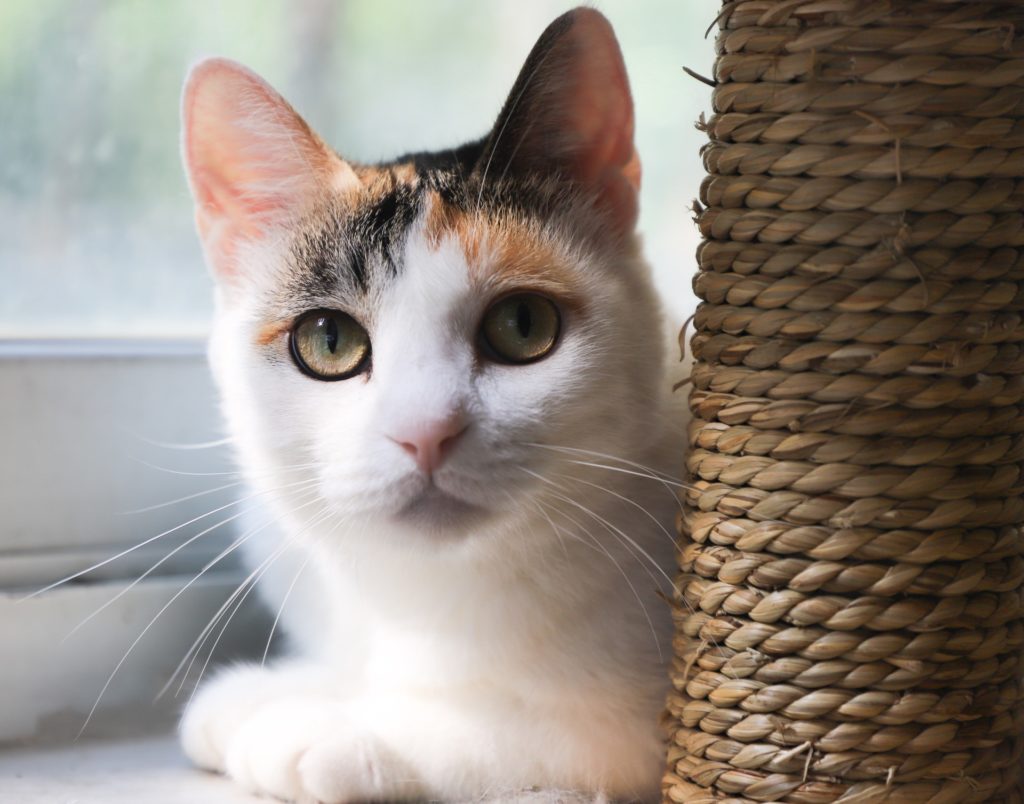
Cat Care Essentials
Have you recently added a feline friend to your family? Congratulations! We know you’ll be thrilled to have your new cat in your home.
If you are considering adopting a cat, please visit your local shelter. If you are in the Las Vegas area, we encourage you to browse the Las Vegas Animal Rescue Directory to search for adoptable cats.
If you are about to bring a new cat home, please read this first 7 Things To Do Before You Bring Your New Cat Home. All About Purrs also offers an Adoption Success Program to ensure you:
- Select the right cat for your family environment
- Reduces any chance of having to make the difficult decision to rehome
- Purchase the best cat supplies the first time
- Will save you money and make for a happy cat
- Introduce your cat properly to children and other family cats
- Reduces stress in the home and increases the chance for long term bonding
- Learn how to keep your new cat from scratching furniture, counter surfing and much more
- Limits potential behavior issues by being proactive
To learn more about this program, submit an adoption success inquiry or read more about it here.
Read on for useful tips for new cat parents, and for those looking to brush up on their cat care skills.
Basic Care Items
Feeding
We recommend purchasing high-quality, brand-name kitten or cat food. Your veterinarian will be able to assess your new cat or kitten and determine the best diet. Factors such as age, activity level and health make a difference in what and how much a cat should eat. For more information on feline nutrition and how to select a high-quality diet, visit our Nutrition page.
- In general, the ingredients to avoid are by-products, corn, wheat, gluten and soy when purchasing a premium cat food. If you can afford to feed can (wet) food or a combination of can and dry food, this is optimal. There are even higher quality diets, according to some experts, that we will discuss on the Nutrition page.
- Cats require taurine, an essential amino acid, for heart and eye health. The food you choose should be balanced for the life stage of your cat or kitten. Properly balanced foods will contain taurine.
- You will need to provide fresh, clean water at all times, and wash and refill your cat’s water bowls daily.
- Treats should be no more than 5-10% of the diet.
- Many people feed baby food to a cat or kitten who is refusing food or not feeling well. Please read labels carefully: If the baby food contains onion or garlic powder, your pet could be poisoned.
- Take your cat to your veterinarian immediately if signs of anorexia (refusing to eat), diarrhea, vomiting or lethargy continue for more than two days.
- Please visit the ASPCA’s People Foods to Avoid Feeding Your Pets page for a list of off-limits items, as well as their Cat Nutrition Tips page for more information.
Handling
To pick up your cat, place one hand behind the front legs and another under the hindquarters. Lift gently. Never pick up a cat by the scruff of the neck or by the front legs.
If your cat doesn’t enjoy being held, it may be because he has had negative experiences with being restrained. This could be associated with being physically restrained for vaccinations, having their temperature taken or having their nails trimmed. And, unfortunately, there are still some clinics that scruff cats and kittens for any veterinary procedure. It takes only one to two mildly negative experiences to teach a cat to be wary.
If your cat is uncomfortable, you can slowly work with him to build trust. Learn more about Fear Free Tips for Picking Up and Holding a Cat.
Housing
Your pet should have her own clean, dry place in your home to sleep and rest. Line your cat’s bed with a soft, warm blanket or towel. Please keep your cat indoors. Outdoor cats do not live as long as indoor cats. Outdoor cats are at risk of trauma from cars, or from fights with other cats, raccoons and free-roaming dogs. Coyotes are known to eat cats. Outdoor cats are more likely to become infested with fleas or ticks (in some areas), as well as contract infectious diseases.
Identification
ALL CATS (indoor & outdoor cats) SHOULD BE IMPLANTED WITH A MICROCHIP that will ensure that your cat is returned to you if lost. If allowed outdoors, your cat must wear a safety collar and an ID tag. A safety collar with an elastic panel will allow your cat to break loose if the collar gets caught on something. It is important to keep microchip and ID tag information updated as well.
Litter Box
All indoor cats need a litter box, which should be placed in a quiet, accessible location. In a multi-level home, one box per floor is recommended. The rule is to have one more litter box than cat. Thus, if you have 3 cats, there should be a minimum of 4 litter boxes and they should be spread out throughout the home (not all lined up next to each other). Avoid moving a box unless absolutely necessary, but if you must do so, move the box just a few inches per day.
Keep in mind that cats won’t use a messy, smelly litter box, so scoop solid wastes out of the box at least once a day. Dump everything, wash with a mild, unscented detergent and refill at least once a week; you can do this less frequently if using clumping litter. Don’t use ammonia, deodorants or scents, especially lemon or citrus, when cleaning the litter box.
When purchasing your litter boxes, buy boxes 1 1/2 times the length of your full grown cat. Most litter boxes are made too small today for cats to maneuver comfortably in them. No lids either! Cats do not want to be ambushed when exiting the litter box.
Do not use scented cat litter or deodorizers in the cat litter. Do not use liners in your litter boxes either. These will all deter your cat from using the litter box.
If your cat will not use a litter box, please consult with your veterinarian and a behavior consultant. Sometimes refusal to use a litter box is based on a medical condition that requires treatment and there may be a behavior component that led to the avoidance. Please visit our Litter Box Avoidance page for more information.
Grooming
Do not bathe your cat. Cats can spend up to 50% of their waking hours grooming to cover themselves with their scent. So when you step in and bathe them, you are essentially erasing all their work. This seriously effects their “cat mojo“ (confidence). Scent is an important form of communication for cats, especially in multicat households.
Most cats stay relatively clean and rarely need a bath, but you should brush or comb your cat regularly. Frequent brushing helps keep your cat’s coat clean, reduces the amount of shedding and cuts down on the incidence of hairballs. Please visit the ASPCA’s Cat Grooming Tips page for more information.
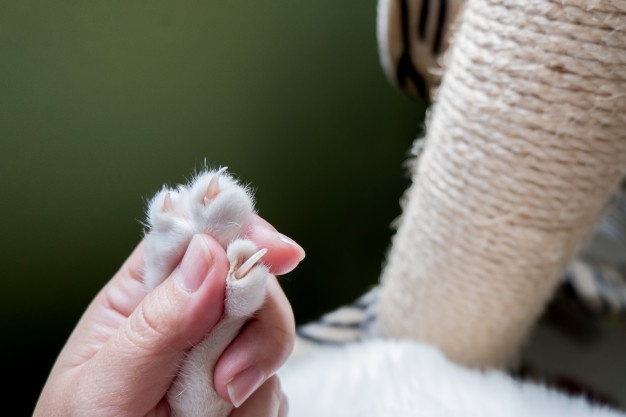
Scratching
Cats need to scratch! It is largely a marking behavior that deposits scent from special glands on the cat’s paws into his territory. In addition, when a cat scratches, the old outer nail sheath is pulled off and left behind in his territory leaving the sharp, smooth claws underneath exposed. Thus, cutting your cat’s nails every two to three weeks will keep them relatively blunt and less likely to harm the arms of both humans and furniture. For step-by-step information on learning how to trim your cat’s nails, visit Committed to Claws.
Provide your cat with a sturdy scratching post, at least 3 ft. tall. The post should also be stable enough that it won’t wobble during use, and should be covered with rough material such as sisal, burlap, rope or tree bark. Many cats also like horizontal scratching pads or cardboard scratchers and loungers. Provide both vertical and horizontal options throughout your home.
Health
Your cat should see the veterinarian at least once a year for an examination and annual vaccinations, and immediately if she is sick or injured. For more information, visit preventive care and signs of illness.
Medicines and Poisons
Never give your cat medication that has not been prescribed by a veterinarian. If you suspect that your animal has ingested a poisonous substance, call your veterinarian or the ASPCA Animal Poison Control Center for 24-hour animal poison information at (888) 426-4435. For more information on cat safety and toxic plants, foods, medications, essential oils, etc., visit our Safety page.
Spaying and Neutering
Female cats should be spayed and male cats neutered by five months of age (they are eligible when they are a healthy 2+ lbs). Please visit the ASPCA’s Spay/Neuter Your Pet page to learn more.
If in Las Vegas area, for information on low-cost spay/neuter options, please visit our Spay & Neuter Clinic page.
Vaccinations
Your veterinarian will make recommendations based on your cat’s age and health. Please visit the ASPCA’s Pet Vaccinations page to learn more.
Cat Supply Checklist
- Premium-brand cat food
- Can or Raw food preferred over dry food (if affordable) or a combination of both
- Animal Protein 1st ingredient
- NO by-products
- NO corn
- NO wheat
- NO gluten
- NO soy
- Food dish & Water bowl
- NO plastic
- Raised dishes/bowls best
- Wash with fragrance-free dish soap and hot water daily
- Interactive toys
- Wands
- Tunnels
- Moving balls
- Treat puzzle
- Toy balls & mice
- Brush
- Comb (only for long hair)
- Safety cat collar with ID tag
- Scratching post, pad and lounger
- Post must be at least 3 feet tall with sturdy base (must be taller than your adult cat with front legs fully stretched out above his head; if you have a kitten, purchase the size he will need as an adult cat)
- Lounger must be minimum of 9 inches wide
- Litter box and litter
- Box 1 ½ times the length of cat
- No cover
- No scented litters
- Cat carrier
- Adult size that opens on top and end
- Cat bed or box with warm blanket or towel
- No beds with “puffy” centers (see pic)
- If cat doesn’t use bed, place a fleece blanket or soft towel in it
- Wash bedding with fragrance-free detergent and dryer sheets monthly

